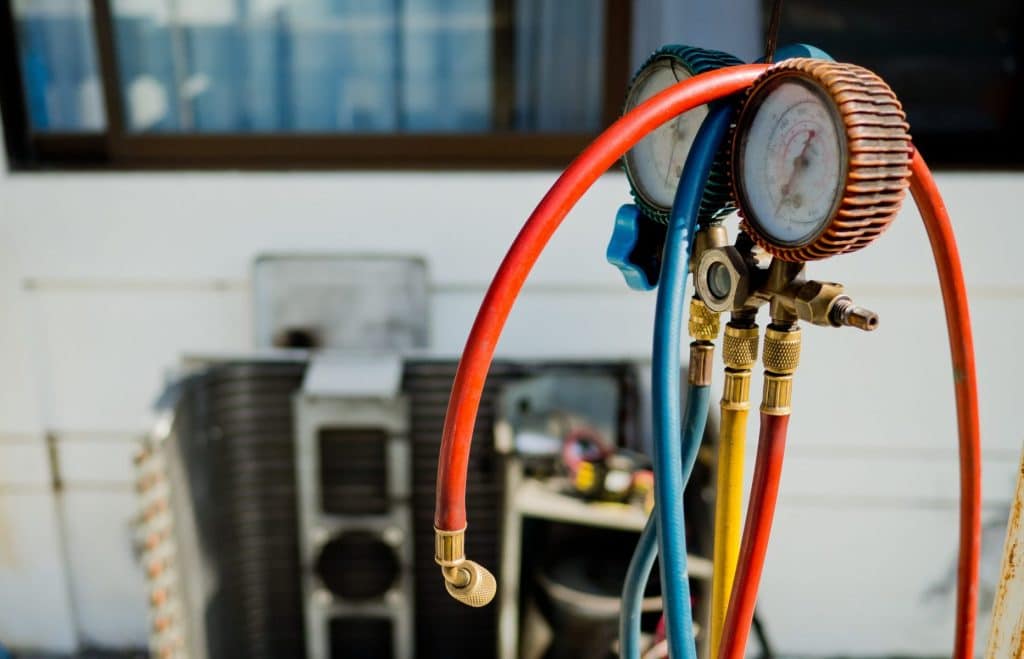Gas furnaces have long been a go-to heating solution for residential homes, apartments, and commercial spaces. Paired with air conditioners or heat pumps, they offer a versatile solution for both heating and cooling needs. The efficiency of gas furnaces is typically measured by their Annual Fuel Utilization Efficiency (AFUE), which indicates the percentage of heat harnessed from the combustion of gas. For instance, a furnace with 90% AFUE, supplied with 200,000 BTU/h, will provide 180,000 BTU/h of effective heating.
The ENERGY STAR program encompasses oil and gas furnaces with a nameplate capacity of up to 225,000 BTU/h. To earn the ENERGY STAR label, a gas furnace must have a minimum of 90% AFUE in southern states and 95% AFUE in northern states. Additionally, the unit should feature an electronically commutated blower motor and have air leakage of 2.0% or less.
The Inflation Reduction Act, enacted in August 2022, extends a 30% federal tax credit to certain ENERGY STAR furnaces, covering up to $600 in equipment expenses. This incentive applies to various HVAC equipment and is raised to $2,000 for heat pumps and biomass stoves.
When Is A High-AFUE Furnace Necessary?

There’s a common misconception that furnace efficiency directly correlates with furnace quality. However, this isn’t always the case. You can find exceptional furnaces from renowned brands like Carrier and Trane that are both efficient and reliable. On the flip side, low-tier furnaces may boast a high AFUE rating while lacking the same level of performance.
For properties located in colder climate zones, it’s advisable to opt for high-AFUE furnaces since they endure a heavier workload throughout the year. To illustrate, let’s consider the following scenario:
- A commercial space requires 100,000 kBTU per year.
- An 80% AFUE furnace needs 125,000 kBTU (1250 therms) to produce 100,000 kBTU of heat output, while a 96% AFUE furnace only requires 104,167 kBTU (1042 therms).
- Assuming a gas price of $1.85 per therm, the 80% AFUE furnace would cost $2,312.50, while the 96% AFUE furnace would cost $1,927.70.
In this simplified example, the 96% AFUE furnace delivers the same heating output throughout the year (100,000 kBTU) while saving nearly $400 in gas expenses. High-AFUE furnaces prove their worth in regions with demanding heating requirements.
However, there are instances where lower-efficiency furnaces make financial sense. 80% AFUE furnaces use a single heat exchanger to extract heat from gas combustion, while their 90-99% AFUE counterparts incorporate a secondary heat exchanger for improved heat extraction. This secondary heat exchanger makes the furnace more expensive, but it’s a justifiable investment when lifetime gas savings surpass the added cost.
80% AFUE furnaces are often recommended for regions with mild winters, where the annual heating load is relatively low. They are also a practical choice for rental properties, vacation homes, and other spaces with intermittent heating requirements. To make an informed decision, always consider local natural gas prices and available incentive programs, which can further affect the cost-effectiveness of higher AFUE furnace models. Notably, ENERGY STAR furnaces with a minimum AFUE of 97% qualify for the 30% tax credit introduced in January 2023.

Choosing Between Upflow And Downflow Furnaces
While evaluating furnace options, you’ll encounter units available in both upflow and downflow configurations. It’s important to understand the impact of these configurations. Warm air naturally rises above cooler air due to buoyancy, and this has significant consequences for furnace operation.
- An upflow furnace benefits from natural convection, making it operate more efficiently.
- A downflow furnace, on the other hand, must force warm air downward, working against its natural tendency.
In cases where a furnace is paired with heat pumps and air conditioners, both systems often share the same blower. In such scenarios, a downflow blower becomes advantageous since cool air naturally descends, making the cooling process more efficient, whereas an upflow blower might become less efficient.

To Sum It Up
Choosing an upflow blower will enhance heating efficiency but may come at the cost of cooling efficiency. Conversely, a downflow blower will optimize cooling efficiency at the expense of heating efficiency. Downflow furnaces are particularly effective in warmer climates, where the gain in air conditioning efficiency outweighs the loss in heating efficiency.
By carefully considering your climate zone, heating requirements, and the design of your HVAC system, you can select the optimal furnace for your specific needs. A well-chosen furnace will not only keep you comfortable but also help you save on energy costs in the long run.






GIPHY App Key not set. Please check settings